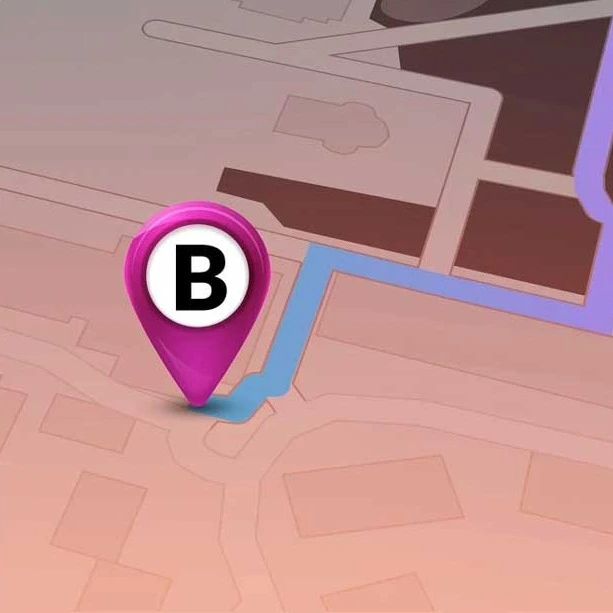These days, everyone expects to know where their stuff is. Whether it’s an X-ray machine in a hospital, a shipment being delivered, or the location of your spouse’s car. (In case my wife is reading, I’ve never tried that last one. Promise.)
No matter what industry you’re in, there’s a good chance you can leverage asset tracking hardware to your advantage. Having the ability to monitor physical assets gives organizations greater visibility into their operations, helps prevent losses, and even enables better customer service. (For those of you who haven’t yet invested in the tools, here’s how to know if you’ll benefit from asset tracking.) Where is asset tracking headed in the future? It depends on the type of tracking you’re talking about.
Download this free white paper to find out about the asset tracking solution large-scale manufacturers are using to gain a competitive edge.
Outdoor (GPS-based) Tracking
One way to think of GPS asset tracking is the idea of tracking fleets of vehicles and packages in transit. This type of tracking represents a fairly mature market, because it uses (now inexpensive) technologies that have been around for a long time, like GSM, 2G, and various other cellular backhaul. Commonly used vehicle trackers range from the small devices that plug directly into the OBD port of a car to the magnetic battery powered GPS trackers.
Despite the low cost, however, tracking vehicles in this way is becoming less necessary due to smartphones. Almost everyone has a phone, and it’s much easier to install an app on a worker’s phone and track where the phone is than it is to install a device in a car to track GPS. I think we’ll see more fleet tracking being done via smartphone in the future. But it will also introduce other issues related to phone ownership: Will employees want such an app installed on their phones? Who will pay for the data use? Will employers need to purchase phones for their workers? (That last one means more people will need to start carrying two phones, which could also be problematic.)
Phone tracking isn’t the only thing that will contribute to the decline of vehicle tracking. Technology like LTE-M combined with WiFi sniffing is making it possible to track packages and shipments (which are inside a truck, which means GPS-enabled devices won’t work) rather than the vehicles transporting them. LTE-M allows tracking devices to connect to cellular networks at lower cost and with much longer battery lives. Also, hybrid asset tracking solutions that use short-range connections, like Bluetooth coupled with backhaul via LTE-M, are poised to do very well in the future. Solutions like these save money—because they reduce the amount of trackers needed—and help address the problem of having to return numerous trackers once a delivery is complete.
Indoor Asset Tracking
More organizations are also starting to realize the benefits of indoor asset tracking, which has use cases for everything from healthcare (tracking samples in a lab or critical capital equipment, for example) to construction (to track workers or prefab pieces on a construction site) to manufacturing (tracking inventory).
On the indoor tracking side, technologies like Bluetooth have become more prevalent, making it easier to track things inside. Other technologies are also continuing to mature, including ultra wide-band and WiFi-based tracking. All these systems are becoming easier to employ and manage and less expensive, which will put them, for the most part, within reach of most organizations as time goes on.
Location Tracking As A Cornerstone Of The IoT
In my view, location tracking is—and will continue to be—a cornerstone of the IoT. That’s because most IoT applications are grounded in where the connected device is located. Even if it’s part of a smart grid, like an electric meter, you have to know what house is connected with the meter and where the meter is installed before anything else can be done. For that reason, location tracking will always have value.
But knowing the location of things also adds value, often saving time spent provisioning. For example, imagine a cold chain monitor at a pharmacy. If it doesn’t know its location, someone has to type in the serial number of the device and its location. But what if the monitor could detect and signal its own location automatically? That makes it even easier to use. Or what if a “smart” dishwasher could pass maintenance information to the cloud automatically, including information about where it’s located? The prospect of a maintenance crew showing up without your intervention might be a little scary, but it could benefit both homeowners and manufacturers. It could also pose some interesting ethical dilemmas—what implications does automatic location tracking have on privacy? Let us know your thoughts in the comments below.
Interested in an asset tracking hardware solution now?
Asset tracking has a bright future, but it can also be implemented now, to help you improve productivity and save money. Talk to us about your specific use case and we’ll work with you to find out how one or more of our connectivity solutions can help.





